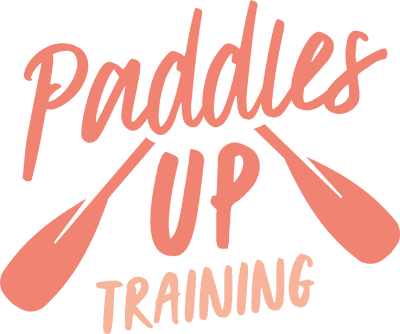If you use a Stand Up Paddleboard, choosing your SUP leash is a vital decision for your safety and that of your group when coaching and leading. It keeps you and your paddleboard together when things don’t go to plan.
Choosing your SUP leash for the environment and conditions you are paddling in is essential. Failure to do so could put your safety at risk – check out all our Stand Up Paddleboard courses.
If you end up in the water wearing the wrong leash on moving water i.e. flowing rivers, tidal rivers or in tidal races, this can cause the leash to become snagged or caught on obstacles and to become entangled.
This presents a danger that is difficult to extract yourself from. In these conditions, a quick release belt system is the best option and could be essential if you are in danger.
Our partners at Paddle UK have created a great infographic as guidance. You can find it below. You will also find advice on which leashes are best for different environments. For wider training on safety, check our Sup Safer Course training.

1. Quick release belt system
Suitable environments for use: any moving/flowing water including, tidal rivers and estuaries, tidal races, where there is a risk of snagging or entrapment.
A quick release belt system is connected to a belt with a quick release buckle or fastening. It can be easily reached if you come off your board and are caught or held by the force of the water. When fitted and used correctly it releases you from your board and leash attachments, freeing you from any dangerous entanglement.
It is normally worn around your waist however if you are wearing a buoyancy aid, it is worn on top, high on the chest.


2. Calf and Ankle (knee) leashes
Suitable environments for use: Lakes, canals, sea / coastal bays, and surf where there is no risk of snagging or entrapment

a. Calf Cuff (knee) leashes
These are similar to an ankle leash but the cuff attachment is slightly larger and fits just below your knee. Some people may prefer this type of leash for ease of attachment but the environments in which they should be used are similar.

b. Ankle Cuff leashes
These are the most common leash, they often comes with your board if you buy a package. They are easy to wear and to fit. Always attach them to the same leg each time you paddle, that way you will always know where to release them if needed.
It is common practise to attach the cuff from a curly leash, which would normally attach to your ankle or calf, to the quick release belt system.




 Go Paddling
Go Paddling Clear Access Clear Waters
Clear Access Clear Waters Paddles Up Training
Paddles Up Training Clubhouse
Clubhouse Services Login
Services Login